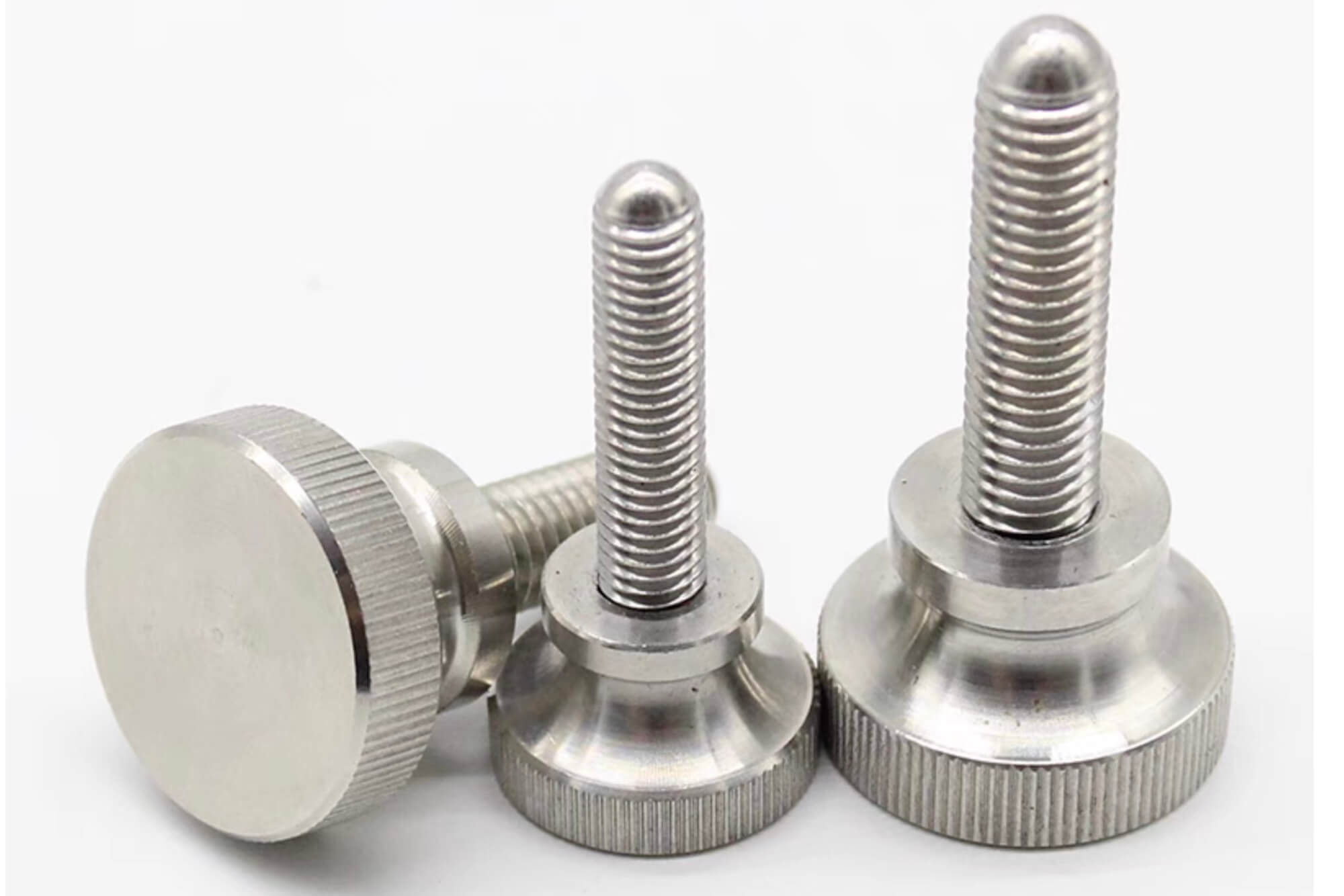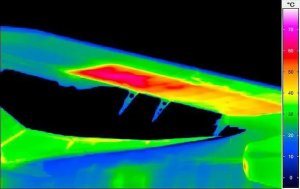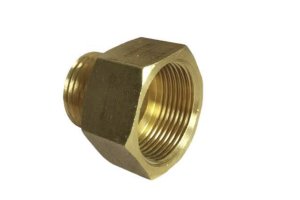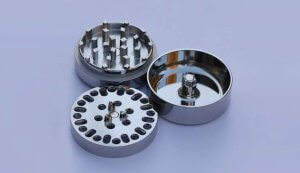Introduction to Knurling and CNC Machining
Knurling is one of the most critical yet often overlooked processes in CNC machining, and I’ve come to appreciate its importance after years of hands-on experience. When I first encountered knurling in the field, I was immediately struck by how essential it is for improving both the functionality and aesthetics of various parts. As engineers, we often focus on technical specifications, such as load-bearing capacity or material strength, but knurling offers something different—grip, precision, and an ergonomic advantage that can make all the difference in product performance.
I distinctly remember working on a project for a premium line of hand tools, where the design called for not only durable materials but also a grip that users could rely on, even in wet or oily conditions.Custom machining techniques allowed us to tailor the knurling pattern to the exact needs of the design. Knurling, when applied properly, can increase the surface area and provide excellent grip. By using CNC machining for this process, we were able to create perfectly aligned patterns with high consistency across hundreds of parts, which was crucial for mass production. The CNC machined parts performed consistently well, providing the durability and comfort required by end-users. The CNC technology also helped us achieve faster turnaround times while ensuring the high quality that the project demanded.
The role of CNC machining in knurling cannot be overstated. This is because CNC allows for automation and fine control, making knurling precise, repeatable, and ideal for high-volume manufacturing. Whether you’re producing automotive parts, aerospace components, or medical devices, CNC knurling provides a reliable method for achieving the desired surface finish while keeping costs under control.
The Role of CNC Machining in Knurling
When I first started using CNC machines for knurling, I saw firsthand how the technology allows for precision that simply isn’t achievable with manual methods. The benefits of CNC machining are clear—it’s faster, more consistent, and minimizes human error, which is crucial in manufacturing environments that require repeatable accuracy.
Here’s how CNC helps in knurling:
- Precision and Accuracy: One of the key advantages of CNC knurling is its ability to apply patterns consistently and accurately across multiple workpieces. In traditional machining, knurling could vary from part to part depending on how well the operator controlled the process. But with CNC, the tool’s movement and depth of cut are all controlled by pre-programmed software, ensuring each part is identical.
- Increased Production Speed: For large batches, CNC machining reduces the time spent on setup and production. CNC knurling processes are typically automated, meaning fewer operator interventions are needed. This was a game-changer in a project I worked on for an automotive client, where the knurling process was automated, allowing for consistent quality across hundreds of parts, and meeting tight production deadlines.
- Flexibility and Customization: One of the things I particularly like about CNC is how it can adapt to various types of knurling patterns—diamond, straight, or crosstype. This flexibility is valuable when working with different materials or product designs. For example, we had a project where we needed to create a textured surface for an automotive gear shift knob. The diamond pattern provided excellent grip and also matched the visual aesthetic desired by the client.
By using CNC machining, I was able to automate the knurling process, reducing errors and ensuring that every part in the batch had identical features, which ultimately improved the functionality and safety of the final product.
Understanding Knurling: A Key Surface Finishing Process
In my early days of working with knurling, I thought it was a simple process of adding patterns to a surface. But as I gained more experience, I realized that knurling is both an art and a science. The knurling pattern you choose can dramatically impact the functionality and performance of the product, making it crucial to understand the different types and how they are used in specific applications.
Types of Knurling
After years of working with different industries and applications, I’ve learned that there isn’t a one-size-fits-all approach to knurling. Each knurling pattern has its distinct benefits, and choosing the right one for your part can make a big difference in its performance.
- Straight Knurling:
- Characteristics: This pattern involves parallel lines running in one direction across the workpiece. Straight knurling is the most basic pattern and provides a straightforward solution for grip enhancement.
- Use: It is commonly used for shafts, handles, and rods that require additional grip but do not need the complexity of other patterns. Straight knurling is efficient, cost-effective, and works well for components that don’t undergo excessive handling or stress.
- Diamond Knurling:
- Characteristics: A diamond pattern created by crossing two sets of straight lines. It’s a popular choice for applications where both grip and aesthetics are important.
- Use: I’ve found that diamond knurling is the most versatile pattern, used extensively in automotive and medical applications. For example, on a recent automotive project, we used diamond knurling on control knobs to enhance grip and provide a visually appealing finish. It provides the highest friction and grip, making it ideal for parts exposed to wear and tear, such as hand tools, knobs, or fasteners.
- Crosstype Knurling:
- Characteristics: This knurling pattern combines two intersecting lines to form a cross. It creates a finer, more intricate pattern that provides exceptional grip and a visually unique design.
- Use: Crosstype knurling is ideal for aesthetic applications where the part needs to look elegant but also offer high functionality. For instance, in high-end kitchen tools or medical instruments, this pattern provides a balance between form and function, making it a favorite for luxury products.
In all of these applications, CNC knurling ensures that the patterns are applied consistently and at the exact depth required, ensuring that the parts meet the desired specifications. I’ve worked with all three types of knurling, and in every instance, CNC machining helped produce flawless results, without the inconsistencies and mistakes I’ve seen when using manual methods.
Applications of Knurling in CNC Machining
I’ve seen firsthand how knurling is used in various industries, each requiring different knurling patterns for their specific needs. Here are a few examples from projects I’ve worked on:
- Automotive: Knurling is frequently used on steering wheel hubs, gear shift knobs, and pedals to enhance grip and provide a tactile feedback mechanism for users.
- Aerospace: In aerospace, knurling is essential for fasteners and connectors. These parts are often exposed to high levels of stress, and knurling helps improve grip and make assembly easier, especially in tight spaces or under pressure.
- Medical Devices: Medical tools, such as surgical instruments or diagnostic devices, require knurling to ensure that the handles remain secure and easy to use, even in sterile or wet conditions. I worked on a project involving CNC knurling of surgical handles, where grip was absolutely critical for precision during operations.
Each of these projects required precise application of the right knurling pattern. And in each case, CNC machining allowed us to achieve high-quality, consistent results that would have been difficult to replicate using traditional machining methods.
CNC Machining for Knurling: Why It Matters
As I delve deeper into CNC knurling, it’s clear that CNC machining offers a distinct advantage over traditional methods, not just in terms of speed and precision, but also in terms of flexibility. When I first made the transition from traditional machining to CNC, the improvements in both quality and productivity were immediately noticeable. The ability to program intricate details into the process, such as pattern depth, speed, and alignment, allows for the creation of complex knurling patterns with unparalleled consistency.
Why CNC is Ideal for Knurling
Here are some specific reasons why CNC is indispensable for modern knurling processes:
- High Precision: In CNC machining, the pattern’s depth, width, and spacing are all controlled by pre-programmed software. This means that every part produced can be exactly the same, reducing the chances of human error and improving part quality.
- Speed and Efficiency: CNC machining automates the knurling process, significantly reducing setup time and improving overall production speed. When working on mass-production runs, like the ones I’ve experienced in automotive or medical device manufacturing, the ability to automate knurling can save hours of labor, while still maintaining high-quality standards.
- Flexibility in Design: CNC knurling is highly flexible, allowing for customization based on part specifications. For example, when I worked with a client to design high-performance automotive parts, we needed a knurling pattern that could provide enhanced grip while matching the aesthetic of the car’s interior. CNC allowed us to execute this with precision and speed.
I’ve used CNC knurling on countless projects across industries, and in every case, it has delivered superior results compared to traditional methods.
CNC Programming for Knurling
CNC programming for knurling is where precision meets creativity. As I started programming CNC machines for knurling, I quickly realized that the process requires a deep understanding of both the material properties and the machine capabilities. With the correct program, a CNC machine can execute knurling tasks that would be incredibly difficult or time-consuming to achieve with manual methods.
Basic CNC Knurling Program Structure
Writing a successful CNC knurling program involves several crucial steps. I can’t stress enough how important it is to get the programming right, as small errors can lead to defects in the knurling pattern or material damage. Here are the steps that I use to ensure the program is successful:
- Tool Selection: One of the first decisions is selecting the right knurling tool. For softer materials like aluminum, I can use high-speed steel (HSS) tools, while for tougher materials like steel or titanium, carbide-tipped tools are ideal due to their durability. I recall a time when I was working on a project that required knurling on stainless steel—using carbide tools was the best decision because they maintained their edge much longer than HSS tools.
- Feed Rate and Spindle Speed: The feed rate (how fast the tool moves through the material) and spindle speed (how fast the tool spins) must be adjusted for the material. For softer materials, I can typically use a faster feed rate. However, for harder materials like steel, I must lower the feed rate and adjust the spindle speed accordingly to reduce tool wear and maintain precision.
- Depth of Cut: The depth of cut will determine the final knurling pattern’s sharpness and grip. I often start with a shallower cut and gradually increase the depth if needed, based on the material’s hardness and desired texture. A deeper cut can sometimes result in a more pronounced grip, but it can also increase the stress on the tool, which is why it’s important to test the settings beforehand.
Advanced CNC Programming Tips for Knurling
In my experience, one of the most effective ways to ensure a perfect knurling pattern is to use simulation software. Before running the actual program, I simulate the process to identify any potential issues, such as tool collisions or incorrect pattern depth. This step alone has saved me a lot of time and material.
Another key tip is to always check your machine’s tool offset. Small variations in the tool’s position can lead to misalignment in the knurling pattern. I once had an issue where a tool offset was incorrectly set, and it resulted in a visible pattern misalignment that took several hours to correct.
CNC Program Example: Knurling on Aluminum vs. Steel
Here’s a simplified example of a CNC knurling program that I often use when working with aluminum versus steel. By adjusting key settings like spindle speed and feed rate, I ensure that the process runs smoothly for both materials.
| Parameter | Aluminum Setup (6061) | Steel Setup (1018) |
|---|---|---|
| Spindle Speed | 1200 RPM | 800 RPM |
| Feed Rate | 0.05 mm/rev | 0.02 mm/rev |
| Cut Depth | 0.2 mm | 0.15 mm |
| Knurl Pattern | Diamond | Straight |
| Tool Type | Carbide-Tipped | Carbide-Tipped |
The key difference between the two setups lies in the spindle speed and feed rate. Aluminum, being softer, can be processed at higher speeds, while steel requires slower speeds to prevent tool wear and ensure a clean cut.
Troubleshooting: Common Challenges in CNC Knurling
Throughout my time working with CNC knurling, I’ve encountered my fair share of challenges. However, these challenges provided valuable learning experiences. Below, I’ll go into detail about some of the most common issues I’ve encountered and how to troubleshoot them effectively.
1. Surface Imperfections
Problem: One of the most frequent issues with knurling is surface imperfections—such as rough textures, inconsistent patterns, or even tool marks. These imperfections often arise when the machine’s parameters, such as feed rate or tool alignment, are incorrect.
Solution: To resolve surface imperfections, I always start by checking the tool alignment and ensuring it’s centered. If the tool is misaligned, the pattern will be uneven. Then, I adjust the feed rate and spindle speed based on the material. For materials like steel, reducing the feed rate and increasing the spindle speed can help eliminate roughness. Lastly, ensuring the coolant is properly applied can reduce tool wear and improve surface finish.
2. Tool Wear
Problem: Tool wear is another common issue in CNC knurling, especially when working with harder materials. Over time, the knurling tool can lose its sharpness, resulting in poor-quality patterns or inconsistent depths.
Solution: Regular inspection of tools is essential. I’ve found that carbide tools last longer when working with harder materials like steel. When tool wear is noticed, I replace the tool immediately, as worn tools can lead to catastrophic failure during machining. Additionally, using the correct coolant helps extend the life of the tool by reducing heat buildup.
3. Inconsistent Knurling Patterns
Problem: Another issue that can occur is inconsistent knurling patterns, often caused by incorrect CNC programmingor tool misalignment.
Solution: To solve this, I check the CNC program to ensure all parameters (feed rate, spindle speed, and depth of cut) are consistent with the material being used. I also make sure the tool is sharp and properly aligned. Running a simulation can help identify potential issues before production.
4. Material Issues
Problem: Sometimes, materials can present unexpected challenges. Softer materials, like aluminum, may deform under the pressure of knurling, while harder materials like stainless steel can be difficult to cut precisely.
Solution: To resolve these issues, I adjust the feed rate and cut depth based on the material properties. For softer materials, I use a higher feed rate, while for harder materials, I reduce the depth of cut to prevent tool wear and material deformation.
Advanced Knurling Techniques and Innovations in CNC Machining
As technology progresses, so do the techniques and tools used in CNC knurling. The following innovations have significantly improved the process, making it faster, more efficient, and more versatile.
1. Laser-Assisted Knurling
Laser-assisted knurling is one of the most exciting innovations I’ve encountered in my career. By preheating the material with a laser, the knurling tool can make cleaner cuts with less force, reducing tool wear and enhancing the quality of the finish. I worked on a project where laser-assisted knurling was used to knurl stainless steel, and the results were impressive—cleaner lines, reduced tool wear, and improved surface quality.
| Feature | Traditional Knurling | Laser-Assisted Knurling |
|---|---|---|
| Tool Wear | Higher | Reduced |
| Surface Finish | Rougher | Smoother |
| Process Speed | Slower | Faster |
| Material Compatibility | Limited to softer materials | Works well on hard materials |
Laser-assisted knurling is particularly effective for applications requiring high-quality finishes and when working with hard materials like stainless steel or titanium.
2. Multi-Axis CNC Knurling
Multi-axis CNC machines provide increased flexibility, allowing knurling to be applied to more complex geometries. For parts that have curved or irregular surfaces, multi-axis machines can create knurled patterns that would be impossible on traditional CNC machines. I’ve used multi-axis machines for knurling on aerospace components, and they offer unparalleled accuracy and flexibility.
3. Advanced CNC Programming for Knurling
With the introduction of advanced CNC programming tools, the entire process of knurling has become easier to manage. I now use specialized software to simulate the knurling process, ensuring that the pattern is applied correctly and identifying potential issues before machining even begins. This step alone has drastically reduced errors and rework in my projects.
Conclusion: The Future of Knurling and CNC Machining
Looking toward the future, CNC knurling will continue to evolve alongside advancements in technology. As more industries rely on precision and automation, knurling will remain a key technique for creating high-quality, functional parts. I believe that innovations like laser-assisted knurling, multi-axis CNC, and advanced programming will make the process even more efficient and versatile.
Whether you’re working in automotive, aerospace, or medical manufacturing, mastering CNC knurling will allow you to produce parts that are not only functional but also of the highest quality. In my experience, this technology is a game-changer, enabling engineers and designers to create parts that meet increasingly demanding specifications with precision and efficiency.
FAQ
- What is knurling in CNC machining?
- Knurling is a machining process where a textured pattern is impressed onto the surface of a workpiece to improve grip, aesthetics, or functionality. CNC machines offer precise control, ensuring uniformity and accuracy in applying knurling patterns.
- How does CNC knurling differ from manual knurling?
- CNC knurling is far more precise and repeatable than manual knurling. With CNC machines, tool paths are automatically generated, offering consistent results across multiple parts with minimal human intervention, whereas manual knurling requires skilled labor and often results in variation.
- What industries use CNC knurling?
- CNC knurling is commonly used in industries such as automotive, aerospace, medical devices, and consumer products. It’s often applied to components like fasteners, control knobs, handles, and other parts that require enhanced grip or tactile feedback.
- Can I use CNC knurling on any material?
- While CNC knurling can be applied to a variety of materials, softer metals like aluminum are easier to knurl, while harder metals like steel may require different tools or processes like laser-assisted knurling. Materials with higher hardness may cause more tool wear.
- What are the benefits of using CNC for knurling?
- The benefits of using CNC for knurling include precision, repeatability, and automation. CNC machines allow for precise depth, width, and spacing control, ensuring consistent quality across large production runs.
- How do I select the right knurling tool for CNC machining?
- The choice of knurling tool depends on the desired pattern (straight, diamond, cross-type), material being machined, and the required depth. A sharper tool will create a cleaner finish, while the material’s hardness will influence the tool’s life expectancy.
- What are the different types of knurling patterns, and when should I use them?
- Common knurling patterns include:
- Straight Knurling: For linear parts, such as shafts or rods.
- Diamond Knurling: Common for handles, knobs, and fasteners to provide grip.
- Crosstype Knurling: Used for aesthetic purposes or where a finer texture is required. Each pattern has its specific application depending on the desired surface texture and functional needs.
- Common knurling patterns include:
- What is the typical depth of a knurling pattern?
- The depth of the knurling pattern can vary depending on the material and application. Typically, the depth ranges from 0.1 mm to 0.5 mm. For softer materials like aluminum, a shallower depth may be used, while harder materials may require deeper patterns for better grip.
- How does the feed rate affect knurling quality in CNC machining?
- The feed rate directly impacts the quality of the knurling pattern. A slower feed rate usually results in a finer, more precise knurl, while a faster feed rate might produce a coarser or less uniform pattern. It’s essential to balance the feed rate with spindle speed and depth for optimal results.
- What are the challenges of knurling with CNC machining?
- Common challenges include tool wear, inconsistent knurling patterns, and issues with material compatibility. Proper tool selection, maintenance, and machine calibration are key to overcoming these challenges.
- How can I prevent tool wear during knurling?
- Tool wear can be minimized by using higher-quality knurling tools, properly setting machine parameters (such as spindle speed and feed rate), and choosing the right material. Regular inspection and maintenance of the tool will also help extend its lifespan.
- Is CNC knurling suitable for mass production?
- Yes, CNC knurling is ideal for mass production, particularly because of its ability to produce consistent results across large batches. Once the program is set, CNC machines can quickly produce large quantities of knurled parts with minimal manual intervention.
- How do I troubleshoot surface imperfections in CNC knurling?
- Surface imperfections, such as rough or inconsistent knurling, can be caused by several factors, including improper feed rate, too much pressure, or dull tools. To troubleshoot, adjust the feed rate, ensure tool sharpness, and check for proper alignment and calibration.
- What is the impact of spindle speed on knurling quality?
- Spindle speed influences how smoothly the knurling tool cuts into the material. Higher spindle speeds can produce a smoother finish but may lead to faster tool wear or a less defined pattern. A balanced approach between spindle speed and feed rate is necessary for optimal results.
- Can knurling be applied to plastic materials?
- Yes, CNC knurling can be applied to some plastic materials, although it is more common in metals. For softer materials like plastic, using a low feed rate and appropriate tooling is necessary to prevent material deformation or surface damage.
- How does material hardness affect knurling results?
- Harder materials, such as stainless steel or titanium, require more powerful machines and specialized tools to produce the same quality of knurling. The harder the material, the more wear and tear on the knurling tool, and the slower the machining process.
- What kind of maintenance does a CNC machine require for knurling?
- CNC machines require regular maintenance to ensure consistent knurling quality. This includes checking the tool alignment, lubricating moving parts, replacing worn-out tools, and recalibrating the machine periodically to maintain precision.
- What is the role of coolant in CNC knurling?
- Coolant helps reduce heat generated during the knurling process, which can otherwise cause tool wear, material deformation, or poor surface finish. A well-maintained coolant system ensures better tool life and consistent quality during machining.
- Is knurling done in a single pass or multiple passes?
- Depending on the material and desired pattern, knurling can be done in a single or multiple passes. For tougher materials, multiple passes are often needed to achieve the correct depth and pattern, while softer materials might only require a single pass.
- Can knurling be applied to 3D-printed parts using CNC machining?
- Yes, knurling can be applied to 3D-printed parts after they are produced, but the type of material used in 3D printing will affect the outcome. Materials like PLA or ABS may not provide the same level of precision or durability as metals, but with the correct settings, knurling can be applied for aesthetic or functional purposes.
Other Articles You Might Enjoy
- Machining Techniques for Parts: Unlocking CNC and Cutting-Edge Tech
I. Introduction I remember the first time I realized how critical machining is to modern manufacturing. I was interning at a small shop, watching a CNC machine carve intricate features…
- SFM Meaning and Its Importance in CNC Machining for Different Materials
Introduction: What Is SFM and Why Does It Matter in CNC? When I first heard the phrase “sfm meaning” in the context of CNC machining, I remember feeling a bit…
- Chamfered Edge in CNC Machining Techniques and Applications
Why Chamfered Edge Matters in CNC Machining A chamfered edge may seem like a small detail in machining, but it is a critical element in both design and manufacturing. This…
- Choosing the Right Chamfer Bit for Optimal CNC Edge Processing
In the world of CNC machining, precision is everything. Whether you're crafting complex components for aerospace or simple fixtures for everyday use, the attention to detail can make all the…
- Precision CNC Machining of Steel: High-Volume Production
Precision CNC Machining and High-Volume Production As an integral part of modern manufacturing processes, Precision Computer Numerical Control (CNC) machining brings about unmatched accuracy and consistency in the production of…
- Comprehensive Guide to CNC Machining Brass Screws
Brass screws are widely used in various industrial and commercial applications due to their superior mechanical properties and attractive appearance. This article will delve into the characteristics of brass, the…
- Applications and Advantages of Bronze CNC Machining
1. Introduction: The Enduring Allure of Bronze in CNC Machining In this opening section, we explore the timeless appeal of bronze as a material for CNC machining. From its rich…
- Maximizing Precision in CNC Machining: Techniques and Tips
Importance of Precision in CNC Machining Precision is an fundamental component in the field of Computer Numerical Control (CNC) machining. It entails producing parts that are not only accurate but…
- Understanding Counterbore and CNC Techniques Tools and Applications
What is Counterbore and Why Does It Matter in CNC Machining? Counterbore is a term that frequently comes up in machining and manufacturing, especially in industries that require precision assembly.…









